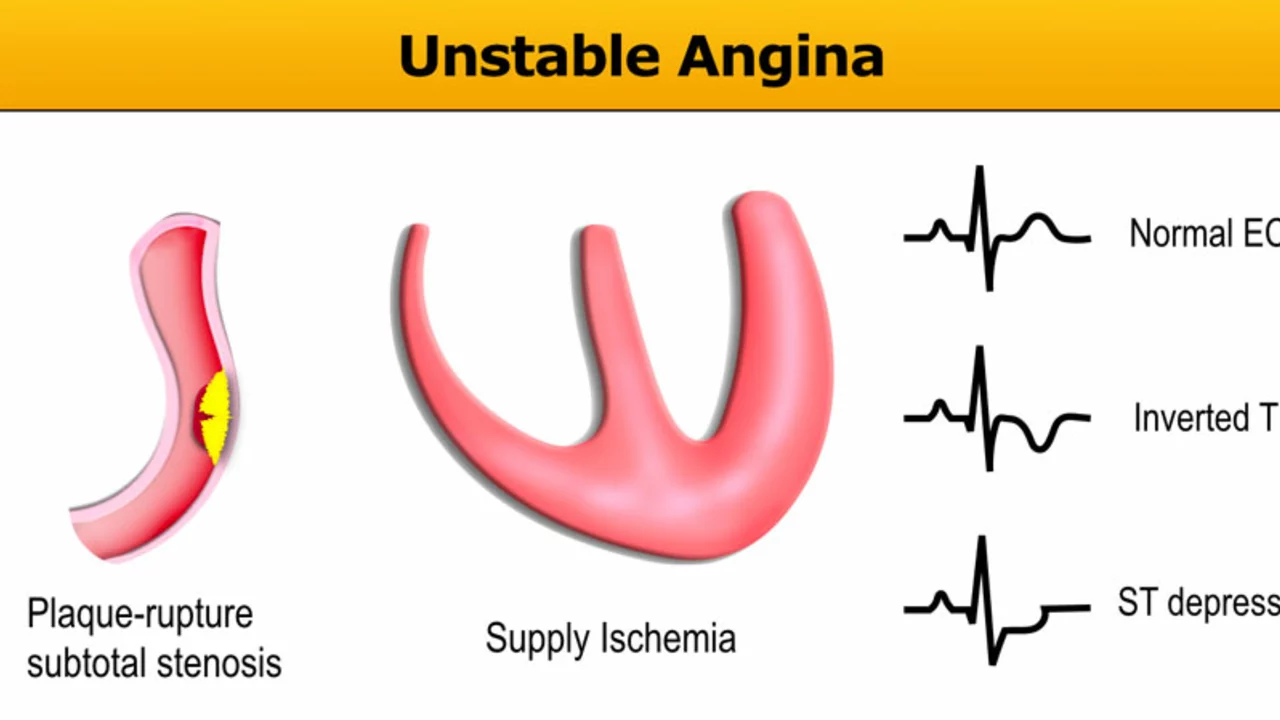Understanding Unstable Angina
Unstable angina is a condition that requires immediate medical attention and could be a sign of a heart attack. It's a type of angina, or chest discomfort, that can occur when the heart muscle doesn't get enough blood flow and oxygen. What makes it 'unstable' is the unpredictable nature of the pain, which can occur even at rest or with little physical effort.
How Unstable Angina Differs from Stable Angina
While both conditions involve chest pain, they differ significantly. Stable angina is predictable and usually occurs with exertion or emotional stress, and stops when you rest. On the other hand, unstable angina can occur without any apparent trigger, can be severe, and resting doesn’t always relieve it.
Symptoms of Unstable Angina
Unstable angina symptoms can vary greatly from person to person. You might experience discomfort in your chest, pain spreading to your arms, neck, jaw or back, shortness of breath, or fatigue. If you notice these symptoms, particularly if they're new, worsen over time, or occur at rest, it's crucial to seek medical help immediately.
Causes and Risk Factors
Unstable angina is usually caused by blood clots that partially or completely block an artery. Factors that increase your risk of developing this condition include high cholesterol, high blood pressure, smoking, diabetes, and a family history of heart disease. Age and gender also play a role, with men and older adults being more susceptible.
Diagnosis of Unstable Angina
Diagnosing unstable angina involves a physical examination, a detailed history of your symptoms, and several tests including electrocardiogram (ECG), blood tests, and possibly a stress test or angiogram. These tests help to determine if your symptoms are due to unstable angina or another condition, and to assess the severity of your condition.
Treatment Options for Unstable Angina
Treatment for unstable angina aims to restore blood flow to the heart, prevent blood clots, and reduce symptoms. This may involve medication like aspirin, blood thinners, or nitroglycerin. In some cases, procedures such as angioplasty or bypass surgery may be needed.
Living with Unstable Angina
Living with unstable angina can be challenging but there are ways to manage your condition. This includes following your treatment plan, making lifestyle changes such as quitting smoking and eating a heart-healthy diet, and monitoring your symptoms closely.
Prevention of Unstable Angina
While you can't completely prevent unstable angina, you can lower your risk. Regular exercise, maintaining a healthy weight, controlling your blood pressure and cholesterol levels, not smoking, and managing stress can all play a role in keeping your heart healthy.
When to Seek Medical Help
Unstable angina is a medical emergency. If you experience chest pain that doesn't go away with rest or nitroglycerin, or if your angina symptoms change dramatically, it's critical to seek medical help immediately. Don't wait to see if the symptoms will go away. Delay can result in permanent damage to your heart or even death.
Conclusion: Coping with Unstable Angina
The diagnosis of unstable angina can be alarming, but with the right treatment and lifestyle changes, you can live a full and active life. It's essential to work closely with your healthcare team, to be vigilant about your symptoms, and to take all medications as directed. Your heart health is in your hands, and every step you take towards a healthier lifestyle is a step towards a healthier heart.

KALPESH GANVIR
July 2, 2023 AT 13:20My dad's on meds now and he's been walking every morning. Small steps, but they matter.
April Barrow
July 2, 2023 AT 18:13Melody Jiang
July 3, 2023 AT 20:58alex terzarede
July 4, 2023 AT 23:07Dipali patel
July 6, 2023 AT 20:43Jasmine L
July 8, 2023 AT 00:28lisa zebastian
July 8, 2023 AT 20:34Jessie Bellen
July 10, 2023 AT 18:55Jasmine Kara
July 11, 2023 AT 14:29Richie Lasit
July 12, 2023 AT 01:43Harrison Dearing
July 12, 2023 AT 21:16Justice Ward
July 14, 2023 AT 12:59bhuvanesh kankani
July 14, 2023 AT 18:56maria norman
July 16, 2023 AT 04:49Iris Schaper
July 17, 2023 AT 13:13katerine rose
July 18, 2023 AT 21:18Selma Cey
July 20, 2023 AT 14:22Francis Pascoe
July 22, 2023 AT 09:41